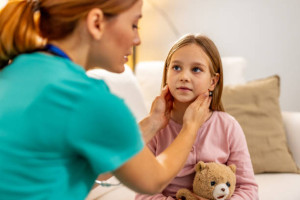Sleep Apnea in Children

What is sleep apnea?
Brief pauses in breathing during sleep are normal, but when breathing stops for periods of time, it's called sleep apnea. Sleep apnea causes oxygen levels in the body to fall, and sleep can be disrupted.
What are the symptoms of sleep apnea?
- Abnormal sleep positions, such as propping the head with many pillow
- Restless sleep
- Loud snoring (may be associated with gasping, snorting or choking), mouth breathing
- Large tonsils
- Increased daytime sleepiness
- Headaches, especially in the morning
- Academic difficulties
- Behavioral changes
- Poor growth or failure to thrive
- Bedwetting
- Frequent upper airway infections
- Difficulty waking in the morning
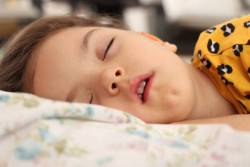 What causes sleep apnea in children?
What causes sleep apnea in children?
Sleep apnea in children can be caused by a variety of factors, both genetic and physical. A family history of obstructive sleep apnea may increase the likelihood of a child developing the condition. Other factors may include:
- Being overweight
- Enlarged tongue, larger neck size or jaw/facial abnormalities
- Congenital problems such as Down syndrome
- Enlarged tonsils and adenoids
If you're concerned about your child's sleep patterns or suspect sleep apnea, our pediatric specialists are here to help. Early evaluation and treatment can make a big difference in your child's overall health and wellbeing.
How is sleep apnea diagnosed in children?
The gold standard for diagnosing sleep apnea is a polysomnogram, also known as a sleep study. The test is performed by a technologist who is experienced in performing sleep studies on children.
Other treatments include:
-
Continuous Positive Airway Pressure (CPAP)
This medical procedure is used to determine the optimal settings for continuous positive airway pressure (CPAP) therapy, a treatment for sleep apnea.
CPAP is a very effective treatment for obstructive sleep apnea, which involves wearing a mask connected to a small device similar to an air compressor. The positive pressure allows you to breathe more normally throughout the night by keeping your airway from collapsing.
This study will include the same monitoring of your sleep, respiration and vitals, and you will be fitted with a mask and given further information regarding CPAP treatment.
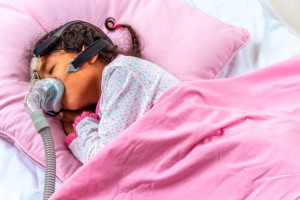
-
Nasal Allergies Treatment
Allergies can cause swelling and congestion in the nose which can make sleep apnea worse. Managing nasal allergies is an important part of treating sleep apnea in children. With proper treatment such as allergy medications, nasal sprays, or avoiding common allergens, swelling and inflammation can be reduced, helping to keep the airway open and improving airflow during sleep.
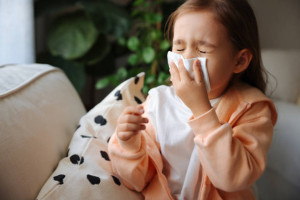
-
Weight Loss
Excess weight can contribute to sleep apnea in children by placing additional pressure on the airway, especially around the neck and upper body. This can make it more difficult for air to flow freely during sleep, increasing the risk of interrupted breathing and poor sleep quality.
If your child is overweight, talk with their healthcare provider about safe, age-appropriate strategies for managing weight.

-
Sleep Position Therapy
Sleep apnea is usually worse when your child sleeps on their back. Training your child to sleep on his/her side may improve sleep apnea.
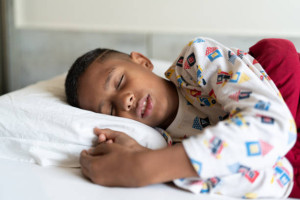
-
Surgery
In some cases, surgery may be recommended to help improve your child’s airway and reduce the symptoms of sleep apnea. Surgical intervention is typically considered when other treatments, such as allergy management or weight control, have not been effective on their own, or when there are clear anatomical issues contributing to the condition.
One of the most common procedures is the removal of enlarged tonsils and adenoids, which can significantly block the airway during sleep. This surgery, known as a tonsillectomy and adenoidectomy, is often highly effective in relieving sleep apnea symptoms in children.
